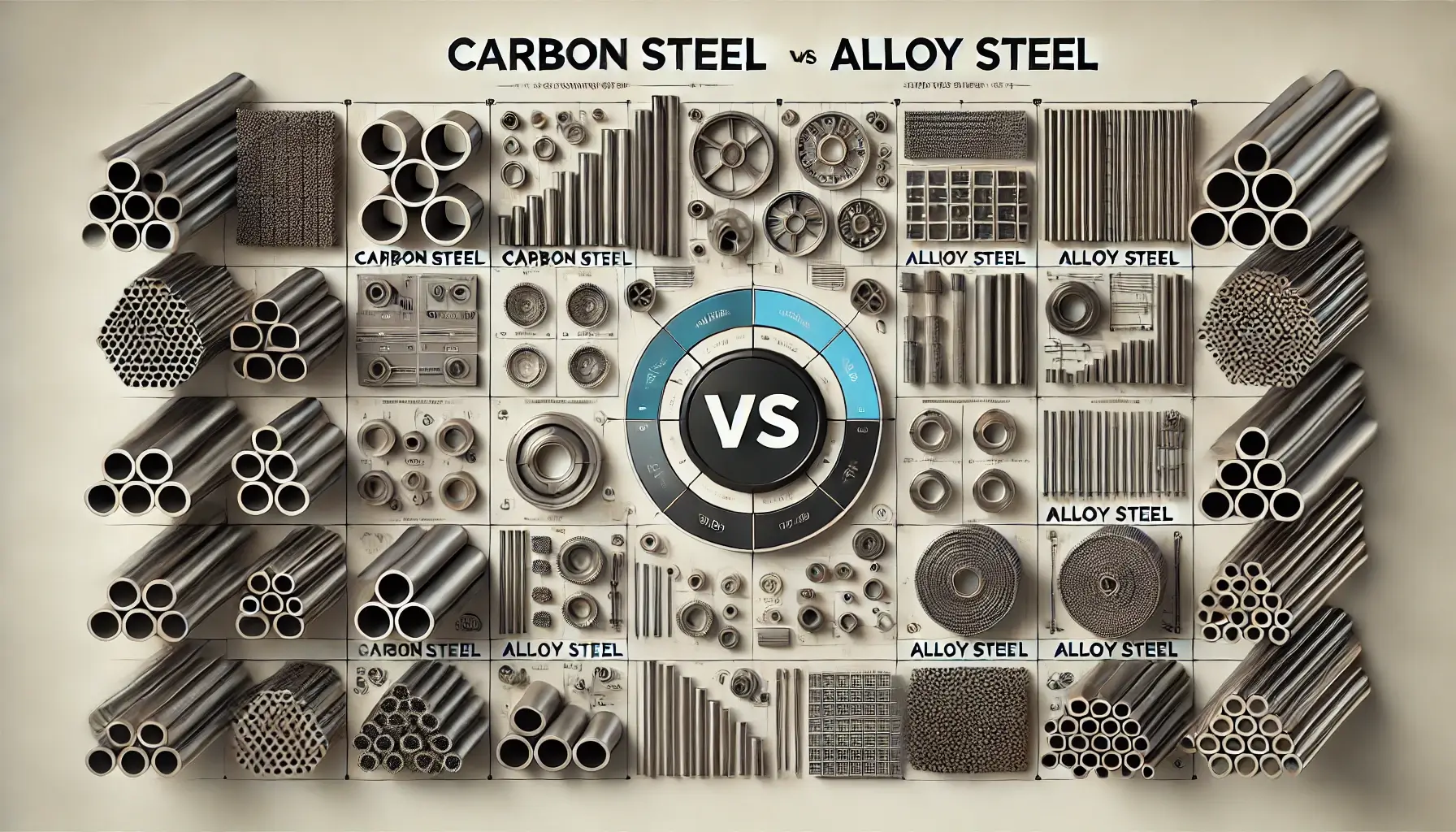Carbon Steel vs Alloy Steel
Understanding the differences between carbon steel and alloy steel is crucial for selecting the right material for various engineering and construction projects. Both types of steel have distinct properties and applications. Here’s a comprehensive comparison to help you make an informed decision.

Table Compare Carbon Steel vs Alloy Steel
| Property | Carbon Steel | Alloy Steel |
|---|---|---|
| Composition | Iron and carbon, with minimal other elements | Iron, carbon, and significant amounts of other alloying elements like chromium, nickel, molybdenum |
| Corrosion Resistance | Low to moderate, depending on carbon content | Higher, varies with type and amount of alloying elements |
| Strength | Good to high, increases with carbon content | Generally higher than carbon steel, can be tailored with specific alloys |
| Ductility | Decreases with higher carbon content | Varies widely, generally more ductile than high-carbon steels |
| Cost | Generally less expensive | More expensive due to alloying elements |
| Applications | Structural beams, panels, wires, and rails | Automotive parts, pipelines, tool steels |
What is Carbon Steel?
Carbon steel is an alloy of iron and carbon, with carbon content up to 2.1% by weight. It is categorized into three groups depending on the carbon content: low carbon (mild) steel, medium carbon steel, and high carbon steel. Carbon steel is known for its strength and hardness but is less resistant to corrosion.
What is Alloy Steel?
Alloy steel is made by adding various alloying elements like chromium, nickel, and molybdenum to carbon steel. These elements are added in varying proportions to achieve specific properties that are not attainable with carbon steel alone, such as increased strength, hardness, wear resistance, and corrosion resistance.
How to Use Carbon Steel
Applications
- Structural Components:
- Used in buildings and bridges due to its robustness.
- Manufacturing Tools:
- Ideal for manufacturing panels, wires, and rails.
Working with Carbon Steel
- Welding:
- Can be challenging with high carbon variants due to the risk of cracking.
- Machining:
- Easier with low carbon steel but gets harder as carbon content increases.
How to Use Alloy Steel
Applications
- Automotive Industry:
- Used in the manufacturing of parts that require high strength and toughness.
- Energy Sector:
- Suitable for pipelines that transport oil, gas, and other chemicals.
Working with Alloy Steel
- Welding:
- Generally requires preheating and post-weld heat treatments due to the complex alloying elements.
- Machining:
- Varies with alloy type; some are more challenging to machine than others.
Differences Comparison
Corrosion Resistance:
- Carbon Steel: Offers limited corrosion resistance; often requires coatings or galvanizing in corrosive environments.
- Alloy Steel: Enhanced corrosion resistance due to the presence of elements like chromium and nickel.
Strength and Ductility:
- Carbon Steel: Strength varies by carbon content, but higher carbon content reduces ductility.
- Alloy Steel: Allows for a better balance of strength and ductility through the addition of various alloys.
Cost:
- Carbon Steel: More cost-effective for general applications.
- Alloy Steel: Costs more due to the presence of pricey alloying elements.
Applications:
- Carbon Steel: Common in construction and manufacturing of less demanding parts.
- Alloy Steel: Used in applications requiring additional strength, durability, and corrosion resistance.
Choosing between carbon steel and alloy steel depends on your specific needs, including the environmental conditions, required strength, ductility, and budget. Carbon steel is suitable for general construction and some manufacturing applications, while alloy steel is ideal for specific applications requiring enhanced properties like increased strength or corrosion resistance. Understanding these differences will help you select the right steel type for your project.
FAQs about Carbon Steel vs. Alloy Steel
What is the main difference between carbon steel and alloy steel?
The main difference lies in their composition. Carbon steel is primarily an alloy of iron and carbon with minimal other elements. Alloy steel includes various alloying elements like chromium, nickel, and molybdenum, which enhance its mechanical properties.
Is alloy steel more expensive than carbon steel?
Yes, alloy steel is generally more expensive than carbon steel due to the addition of high-cost alloying elements that improve its performance in various applications.
Can carbon steel be used in outdoor applications?
Carbon steel can be used outdoors, but it typically requires protective coatings such as paint or galvanizing to prevent corrosion, unlike some types of alloy steel that have inherent corrosion resistance.
What are the typical applications of carbon steel?
Typical applications of carbon steel include construction beams, manufacturing tools, wires, and rails, where high strength is required but corrosion resistance is not critical.
Which type of steel is harder, carbon steel or alloy steel?
Both types of steel can achieve high hardness levels, but alloy steel can be tailored to achieve specific properties through the addition of various alloys, making it generally harder and more durable under specific conditions.
How does welding differ between carbon steel and alloy steel?
Welding carbon steel can be more straightforward, especially with low carbon varieties, but high carbon steel may crack during welding without proper techniques. Alloy steel often requires specific welding methods like preheating and post-weld heat treatment to avoid cracking and maintain strength at the weld joints.
Which steel is better for tools, carbon or alloy steel?
Alloy steel is generally better for tools that require high strength, wear resistance, and durability, such as cutting tools and dies. Carbon steel can be used for less demanding tools.
What makes alloy steel better for automotive applications?
Alloy steel’s enhanced properties such as strength, hardness, and ability to withstand stress make it ideal for critical automotive components that require durability and performance under high stress.
Is carbon steel ductile?
The ductility of carbon steel depends on its carbon content; low carbon steel is quite ductile, whereas high carbon steel tends to be less ductile due to its higher strength and hardness.
Why might someone choose carbon steel over alloy steel despite the superior properties of alloy steel?
Carbon steel is chosen over alloy steel mainly due to its lower cost and adequacy for many applications where additional properties like extreme corrosion resistance or very high strength are not necessary. This makes it suitable for large-scale construction projects and some manufacturing processes.

